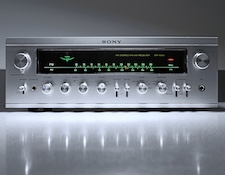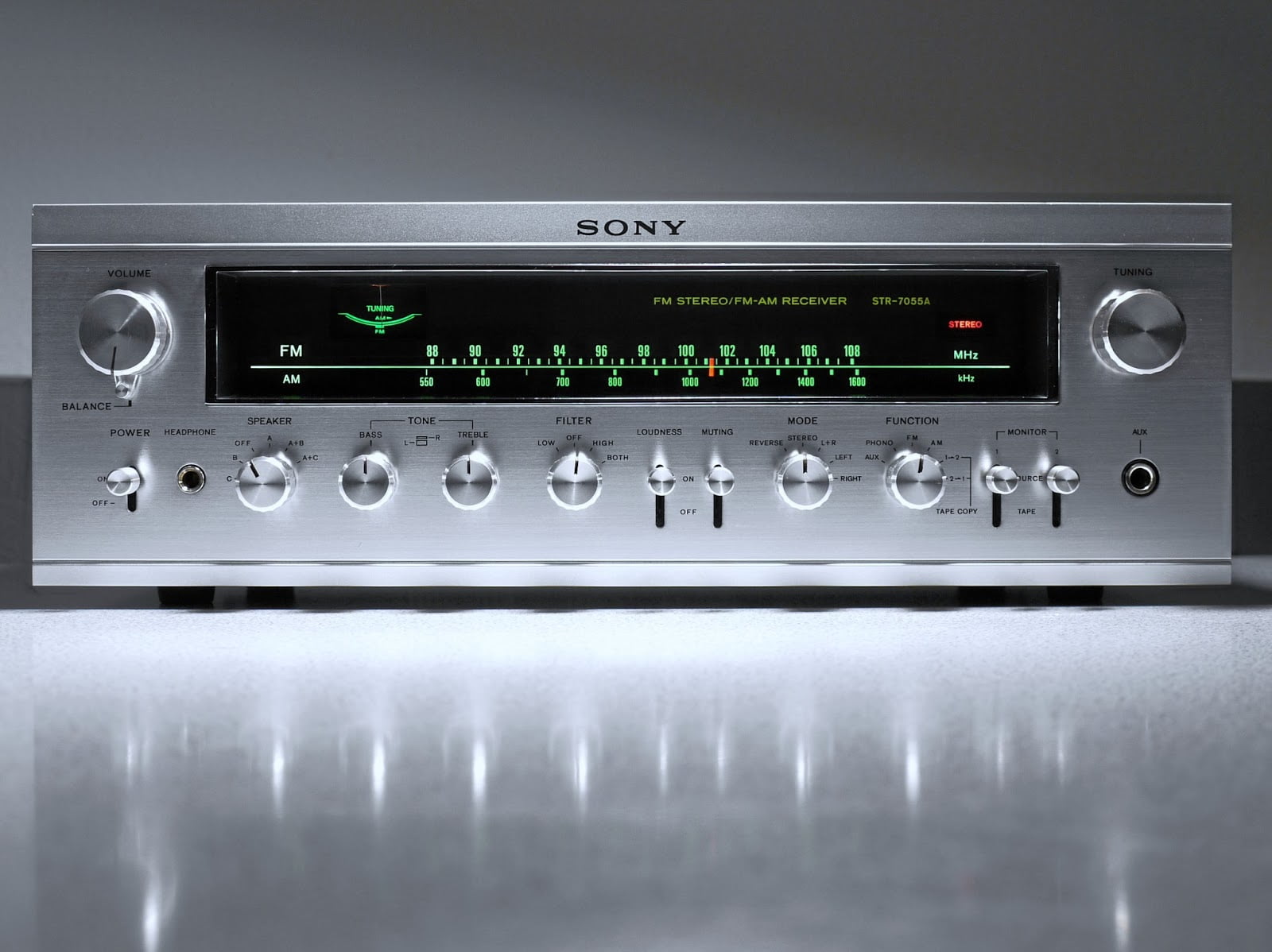It’s the time of year for saving money!
In the first two parts of this continuing series on how to get the most for your money when you buy Hi-Fi, I made it plain that what I would write would take a completely different approach than articles on the same subject in other publications. For one thing, I said, I wouldn’t just provide you with a list of percentages of your total Hi-Fi budget that you ought to spend on each of the various parts of your system (This much for the speakers; this much for the electronics, etc.), but would recognize that different people have different likes and preferences; have different budgets; and have different things that they want their system to do for them.
 I also pointed out that there are (at least) two different kinds of systems that people buy to satisfy their Hi-Fi needs: the kind that — like a home appliance — they expect to buy (possibly for a bedroom or office system); to ask little of, other than background music and perhaps the occasional news broadcast, and to simply keep and enjoy for as long as it lasts. I called these “keeper” systems, and said that there’s another kind of system, too: the one that’s intended for serious listening by a music lover or audiophile, and that will probably be changed or upgraded many times over the years as its owner’s tastes and preferences, budget, or level of commitment change, or new things come on the market to catch its owner’s purchasing attention.
I also pointed out that there are (at least) two different kinds of systems that people buy to satisfy their Hi-Fi needs: the kind that — like a home appliance — they expect to buy (possibly for a bedroom or office system); to ask little of, other than background music and perhaps the occasional news broadcast, and to simply keep and enjoy for as long as it lasts. I called these “keeper” systems, and said that there’s another kind of system, too: the one that’s intended for serious listening by a music lover or audiophile, and that will probably be changed or upgraded many times over the years as its owner’s tastes and preferences, budget, or level of commitment change, or new things come on the market to catch its owner’s purchasing attention.
In addressing the issue of what to buy, I suggested that the first thing you ought to do is to decide what you want your system for; NOT how much you want to spend for it. That invalidates the whole “percentages” thing. How, I asked, can you decide on a budget until you have a purpose in mind and actually go out shopping to see what things cost? And if you don’t know what you want your system to do for you, how can you know what to shop for?
Then, starting with a “keeper” system, I went on to talk about speakers; about how their position in your room can affect their performance, and how, if you don’t ever expect to do any critical listening, you might do best to just get a cheap “personal”-component “mid-fi” system, or even just something like a Bose Wave Radio, and be done with it.
Finally, at the end of Part 2, I suggested some speakers for a “keeper” system on which you DO occasionally want to be able to do some critical listening; gave a suggestion on how to get the best value in digital source devices; and promised more next time.
 Now, in Part 3, I want to give you a tip for getting the very best value in the electronics for your “keeper” system. I already mentioned that for a CD or streaming digital source for your system, you should, because ALL digital sources seem to be at least competent, and many use exactly the same chips, regardless of price level, simply buy the cheapest unit you can find that will do what you want it to do. Yes, certainly, spending more money will likely give you marginally better sound, but the increase in price, IMHO, at any increased level will likely be far greater than the corresponding increase in sound quality. As proof of this, consider that when, some years ago, I put one of the very top-rated DACs of the day up against the DAC built-into a completely ordinary CD player of the same vintage, most members of a knowledgeable listening panel couldn’t say for certain that they heard any difference at all, and that the same test conducted a few day later with a different panel had exactly the same result!
Now, in Part 3, I want to give you a tip for getting the very best value in the electronics for your “keeper” system. I already mentioned that for a CD or streaming digital source for your system, you should, because ALL digital sources seem to be at least competent, and many use exactly the same chips, regardless of price level, simply buy the cheapest unit you can find that will do what you want it to do. Yes, certainly, spending more money will likely give you marginally better sound, but the increase in price, IMHO, at any increased level will likely be far greater than the corresponding increase in sound quality. As proof of this, consider that when, some years ago, I put one of the very top-rated DACs of the day up against the DAC built-into a completely ordinary CD player of the same vintage, most members of a knowledgeable listening panel couldn’t say for certain that they heard any difference at all, and that the same test conducted a few day later with a different panel had exactly the same result!
With receivers and integrated amplifiers, though, price definitely DOES make a difference, and there’s an easy way to be sure of getting the best sound for your money: Again, remember what you’re going to use your system for: If it’s just going to be used for music, and you’re never going to be hooking it up for Home Theater, a “straight” stereo receiver will probably save you some money, and may even give you better sound quality for the same or a lesser price than one designed for Home Theater or A/V.
For stereo sound, only two channels or two channels plus (possibly) a subwoofer (2.1 channels) are necessary, instead of the five or even seven channels of amplification plus a subwoofer (5.1 or 7.1) that must be provided for Home Theater. That means that the manufacturer doesn’t have the expense of providing those extra three or five channels of amplification, so he can either give you higher performance, better-sound-quality two channel stereo for the same price or can actually drop the price of your two channel stereo receiver and still make the same profit. That’s good for you, either way.
 Another way you can save money is by comparing the power and features of different receivers under consideration: Obviously, if there’s some feature that you really think you NEED, buy it, but remember that, although some feature may be nice or helpful “once in a blue moon”, most people DON’T use most of the features on their equipment – even tone controls – most of the time, and plan to buy the receiver with the fewest number of features you think you can actually live with. Odds are that, like the fewer number of channels on a stereo receiver, as opposed to one for A/V or Home Theater, that will – assuming an honorable manufacturer (as most certainly are) — either give you better sound quality for the same price or a lower price overall.
Another way you can save money is by comparing the power and features of different receivers under consideration: Obviously, if there’s some feature that you really think you NEED, buy it, but remember that, although some feature may be nice or helpful “once in a blue moon”, most people DON’T use most of the features on their equipment – even tone controls – most of the time, and plan to buy the receiver with the fewest number of features you think you can actually live with. Odds are that, like the fewer number of channels on a stereo receiver, as opposed to one for A/V or Home Theater, that will – assuming an honorable manufacturer (as most certainly are) — either give you better sound quality for the same price or a lower price overall.
Another thing to look out for is amplifier power, in ANY receiver, stereo or otherwise, More power does NOT automatically mean better sound, but in order to deliver good clean power from its output stages, a receiver needs a clear, solid power supply, with sufficient power reserves to meet any reasonable need. Generally, manufacturers DON’T build different power supplies for every different product they make, but take advantage of the economies of scale available from using the same power supply section in as many products as they can. That means that buying a fewer-channels or lower-output receiver from a manufacturer who also makes more-channels-higher-power models may get you the bigger, hopefully better, power supply and possibly better sound for your lower price.
Next time, I’ll start looking into ways to get the very best value from your “hobbyist” or “music lover” system – the one that you’re going to go to for your very best sound quality, and that’s likely to change regularly and be improved and updated over the course of time.
I hope you’ll join me then!








